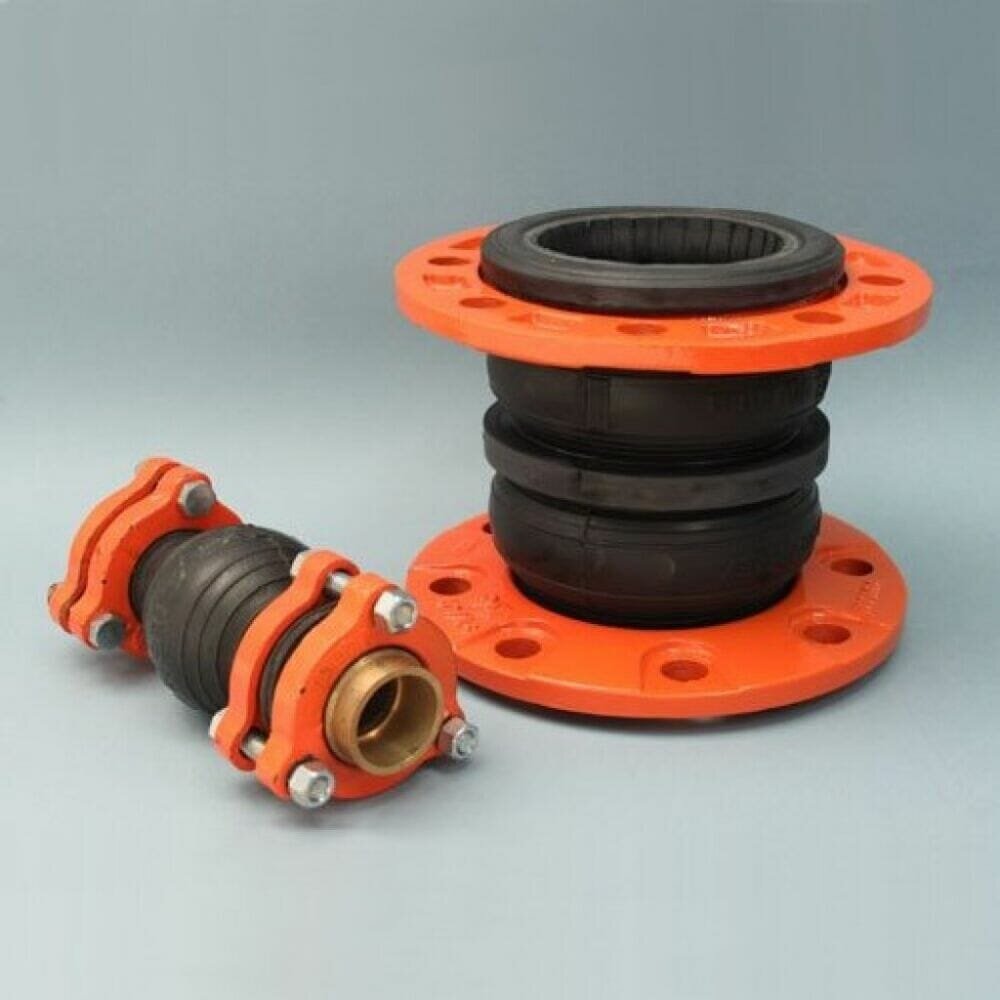~ What engineers have learned from decades of discovery and application experience ~
Flexible pipe connectors are normally used to allow movement, due to connection to moving equipment, or to allow for thermal expansion. This reduces pipe stress and allows for movement but an often-overlooked benefit is that if correctly designed they can reduce the risk of noise and future failure of pipes through vibration. In addition, if a joint or connector were to fail or burst, the cost in damages could be astronomical. In this article, Adam Fox, director of vibration control specialist Mason UK, explains how getting the engineering right can limit the risk of failure.
When fluid is pumped through a system it typically happens as a series of pulses rather than a continuous flow. This can have undesirable effects, such as generating noise or vibration elsewhere in the building. Over time, this can cause pipes and joints to fail through fatigue cracking, causing wider damage through flooding or in the worst case, severe injury.
Rubber expansion joints are a type of flexible pipe connector that offer a solution to this problem. The rubber body of the joint provides the necessary movement in all directions but if designed with a spherical cross-section it can expand and absorb the energy as pulses pass through.
The right design greatly reduces the risk of pipe noise or potential failure further down the line. These connectors are therefore commonly found on the inlet and outlet of pumps, as well as where thermal expansion of pipes occurs.
The consequences of flooding could be severe, so the cost of failure is high. Buildings have been written off after major failures and injury can easily result, especially with steam pipes.
Choosing the right material
With regard to vibration control, we learn a lot from the technical literature. True expertise, however, comes from combining this with decades of testing applications and real-world research. For example, the introduction of our SAFEFLEX rubber expansion joints in 1996 was the culmination of twenty years of research.
A key improvement made by our engineers was the switch of elastomer from Neoprene to Ethylene Propylene Diene Monomer (EPDM). The latter is superior to Neoprene in minimising water swell and resistance to oxygen, so is ideal for those applications involving water pipes. Other benefits include outstanding ozone ageing and superior high temperature tolerance.
We had assumed, like everyone else, that Natural Rubber encapsulated between two Neoprene or EPDM layers was safe at higher temperatures. Practice taught us otherwise: exposure to high temperature over time led to a hardening of the inner carcass.
The solution was to produce a tire or body that was made from the same material throughout. The first key feature of SAFEFLEX was the switch to EPDM throughout. Yet this step, although crucial in our goal of reducing heat failures, was only half the story.
We discovered that EPDM’s ability to tolerate high temperatures was partly dependent on the curing system – the chemicals that stabilise or vulcanise EPDM during curing. Sulphur based curing systems are commonly used because they are cheaper and quicker than the alternatives.
Our research and experience demonstrated peroxide was a superior curing agent. It costs more and the production takes longer, but this is the method that truly reduces the risk of heat failures. In SAFEFLEX, the EPDM cover, liner and frictioning materials are all peroxide cured.
A further discovery was the effectiveness of Kevlar. We learned that Polyester (Du Pont Dacron) was much more resistant to higher temperatures, while very close to the Nylon tensile strength. We also realised that Kevlar had a higher elongation modulus, meaning swapping it for Nylon would limit elongation too. Ultimately, we discovered that DuPont Kevlar offered the ultimate reinforcement for SAFEFLEX, even if it came at an increased cost.
For our SAFEFLEX design, we therefore replaced Nylon with Kevlar. Although we did not raise the temperature ratings above 250 degrees Fahrenheit (121 degrees centigrade), we have succeeded in virtually eliminating temperature aging or reduction of safety factor. For any hot water run, temperature cycling can result in early failure of flexible connections that are not reinforced this way.
Flange design and the risk of pullout
The flange design is also crucial in getting the design right, to reduce the risk of flange pullout. In the traditional design with a one-piece flange, the flanges are put on after the carcass is moulded, so the restraint against pullout is provided by a flexible cable. As long as this cable remains, the risk of pullout always exists.
The only solution to this dilemma is the introduction of a flat steel ring that cannot pull through. However, this change in design necessitates the adoption of split flanges instead of the traditional one-piece flanges.
While this dramatically reduces the risk of pullout, there is still room for leakage. At high pressures, the flange halves can be forced outward and the gap between them would permit leakage, when testing to reach burst pressures. The engineering solution is another unique change to the flange design. The hooked ends on the flanges means the two flanges interlock to prevent this spreading. This is so effective that costly control rods or cables are not required with our SAFEFLEX connectors.
There are some applications where you cannot afford to compromise on quality and safety. Thankfully, through years of engineering expertise, you now don’t need to compromise when it comes to rubber expansion joints.
To find out more about SAFEFLEX and other expansion joints developed by Mason Industries, visit masonuk.co.uk





